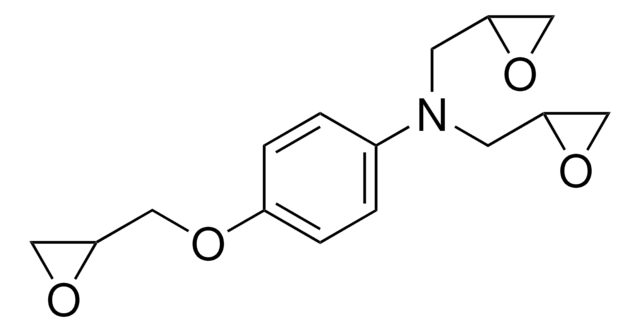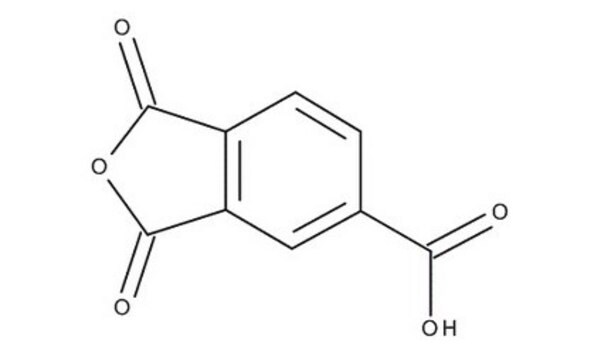406775
Poly[(phenyl glycidyl ether)-co-formaldehyde]
average Mn ~345
Synonym(s):
Phenol-formaldehyde polymer glycidyl ether, Phenol-formaldehyde polymer, oxiranylmethyl ether
About This Item
Recommended Products
form
liquid
specific activity
2.2 epoxide groups per molecule
mol wt
average Mn ~345
refractive index
n20/D 1.589
viscosity
11-17 poise(lit.)
density
1.227 g/mL at 25 °C (lit.)
SMILES string
[H]C([H])=O.C1OC1COc2ccccc2
Looking for similar products? Visit Product Comparison Guide
Related Categories
General description
Application
Features and Benefits
Physical form
Storage Class Code
11 - Combustible Solids
WGK
WGK 2
Flash Point(F)
Not applicable
Flash Point(C)
Not applicable
Certificates of Analysis (COA)
Search for Certificates of Analysis (COA) by entering the products Lot/Batch Number. Lot and Batch Numbers can be found on a product’s label following the words ‘Lot’ or ‘Batch’.
Already Own This Product?
Find documentation for the products that you have recently purchased in the Document Library.
Customers Also Viewed
Our team of scientists has experience in all areas of research including Life Science, Material Science, Chemical Synthesis, Chromatography, Analytical and many others.
Contact Technical Service

![Poly[(o-cresyl glycidyl ether)-co-formaldehyde] average Mn ~870](/deepweb/assets/sigmaaldrich/product/structures/492/686/3e332037-f67b-49a2-8326-268fc7b0b900/640/3e332037-f67b-49a2-8326-268fc7b0b900.png)







